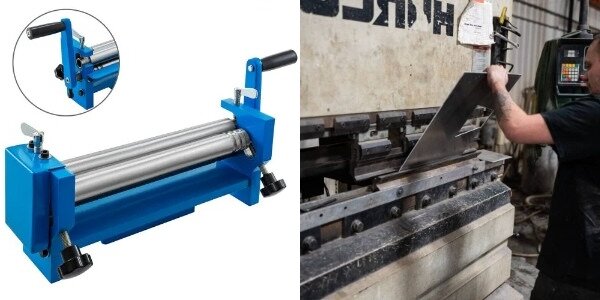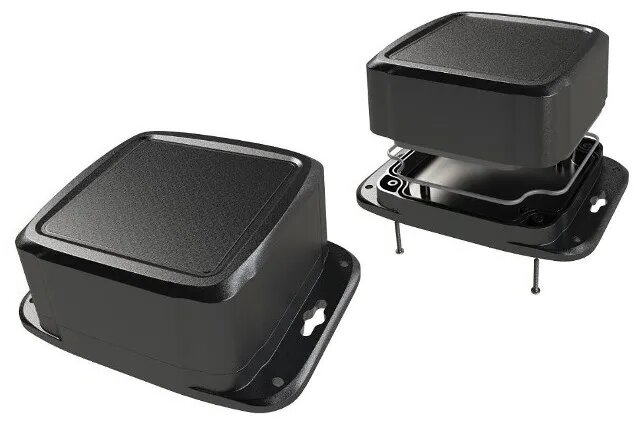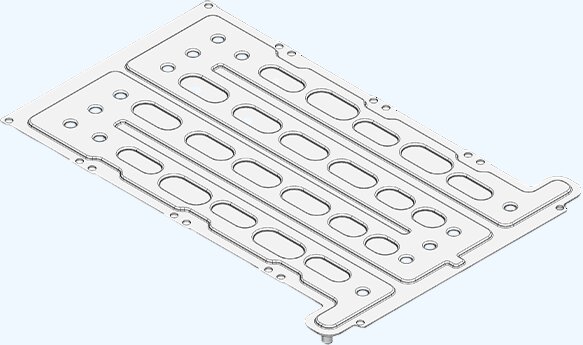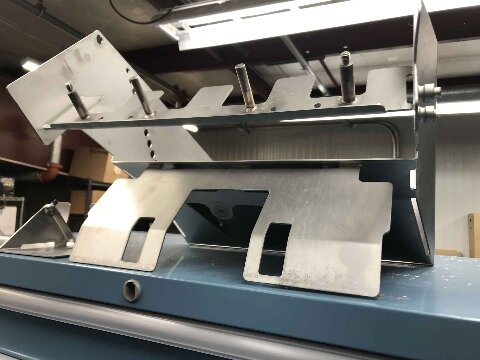Every project has its pressure points. Tight deadlines. Tough materials. Complex part shapes. When it comes to metal fabrication, forming is where these problems show up fast. If the forming isn’t right, the final product won’t perform. The good news? Sheet metal forming gives you many ways to shape metal accurately and quickly, as long as you choose the right method.
This article will break down the key methods, tools, and uses of sheet metal forming. Keep reading to learn which option fits your next project best.
What Is Sheet Metal Forming?
Sheet metal forming is a way to shape metal without removing material. It uses machines to apply force to a metal sheet. This force causes the metal to bend, stretch, or form into the desired shape.
The metal stays in one piece. It doesn’t chip or break. Instead, it flows and stretches under pressure. Common forming methods include bending, stamping, deep drawing, and roll forming. Each method suits different part sizes, shapes, and production needs.
Formed metal parts are everywhere—in cars, appliances, electronics, and medical devices. Forming is key to building strong, lightweight, and affordable products.
Basic Principles of Sheet Metal Forming
Forming works because metal changes shape under force. To get the best results, it’s important to know how metal behaves and what affects its ability to form.
Material Behavior Under Stress
When metal is under pressure, it reacts in two main ways. First, it resists the force. Then, if the force is strong enough, it starts to change shape.
This reaction depends on the type of metal, its thickness, and how it’s processed. Softer metals bend more easily. Harder ones need more force.
How much the metal can bend or stretch before cracking is called ductility. The higher the ductility, the easier it is to form.
Elastic vs. Plastic Deformation
Elastic deformation is when the metal bends but goes back to its original shape after the force is gone. This happens at low stress levels.
Plastic deformation is when the metal stays in the new shape after the force is removed. This is the goal in most forming processes.
To form parts, the force must push the metal past its elastic limit into plastic deformation. This permanent change is what gives the metal its new shape.
Factors Affecting Formability
Many things affect how well a metal can form. These include:
- Material type (aluminum, steel, copper)
- Thickness of the sheet
- Grain direction in the metal
- Temperature during forming
- Surface condition (smooth or rough)
Higher temperatures and smoother surfaces often improve formability. Some metals also form better when the grains run in the same direction as the bend.
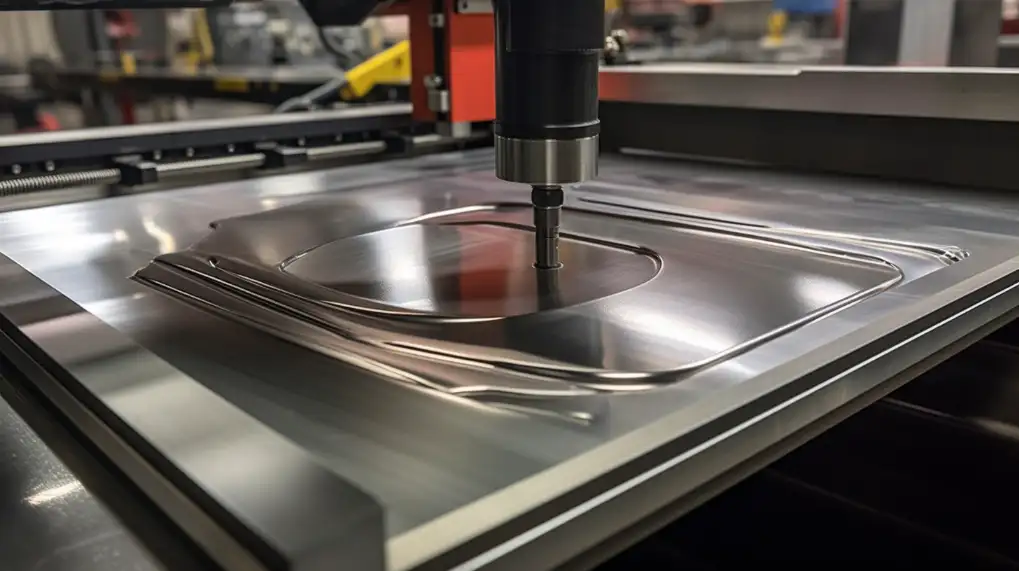
Sheet Metal Forming Techniques
Sheet metal forming includes a variety of methods used to reshape flat metal sheets into useful parts. Each technique has specific uses depending on the final product’s shape, thickness, and strength.
Bending
Among all sheet metal forming processes, bending is one of the most common. It involves deforming the metal along a straight line without cracking or cutting. This technique is used to make angles, curves, and folds. A press brake or a folding machine is usually used to perform the bend.
Many industries, including automotive, construction, and electronics, use bending to produce frames, brackets, and enclosures. It helps create rigid structures from flat sheets while maintaining part strength and function.
Material thickness plays a key role in the bending process. Thicker metals require more force and stronger tools. The bend radius should also match the material type and thickness. This helps prevent cracking, wrinkling, or warping during forming.
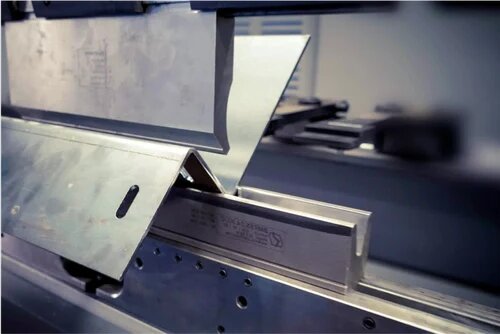
Stamping and Punching
Stamping and punching are fast, repeatable methods for cutting or shaping sheet metal. These processes involve pressing a tool (punch) into the metal using a die underneath. Punching removes parts of the sheet to form holes or shapes. Stamping may also bend or emboss the metal.
These methods are widely used in mass production for parts like covers, panels, and electronic housings. Automotive and appliance industries rely on them for high-speed fabrication.
Tool design, press speed, and metal type affect the outcome. Progressive dies allow multiple operations in one cycle, saving time and improving part consistency.
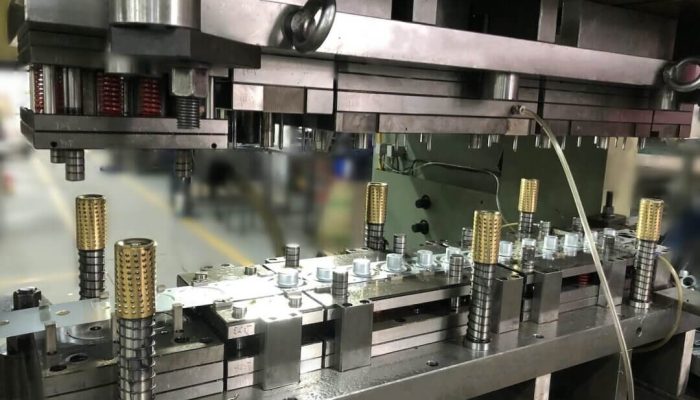
Deep Drawing
Deep drawing stretches sheet metal into a hollow or deep shape without splitting it. A punch pushes the sheet into a die cavity, forming items like cans, kitchen sinks, and battery cases. This method allows seamless and strong shapes with thin walls.
It’s commonly used in the food, medical, and automotive industries. Blank holders are used to keep the metal flat during drawing, which helps avoid wrinkles. Lubrication is often added to reduce friction.
The process works best with ductile materials. Proper die design and controlled pressure are key to avoiding tearing or thinning.

Roll Forming
Roll forming shapes long strips of metal by feeding them through a series of rollers. Each roller bends the sheet a little more until the final shape is reached. This method is ideal for creating parts with a consistent profile along their length.
It’s widely used for making metal roofing, rails, window frames, and structural supports. It offers high production speeds and minimal material waste.
Roll forming works best with thin metal sheets. The setup takes time, but runs efficiently for large volumes.
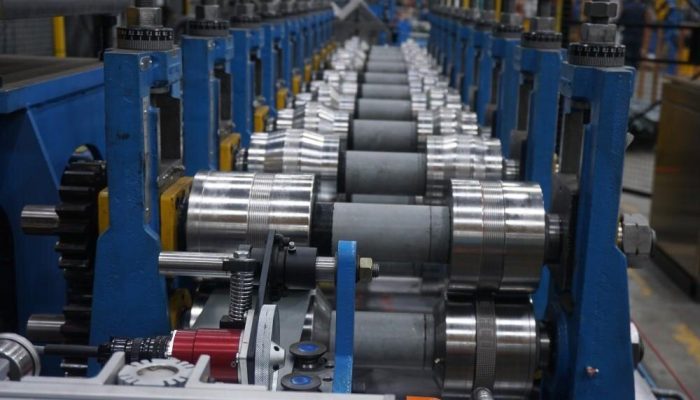
Stretching
Stretching forms curved surfaces by pulling the metal sheet over a mold. The sheet is clamped on the edges and stretched while force is applied. This creates large, smooth shapes with minimal tooling.
It’s used in aerospace and automotive panels where strength and smooth finishes are critical. The process helps achieve a tight fit and reduces the need for welding or fasteners.
Only ductile metals can be stretched without cracking. Proper tension and tool design are necessary to avoid thinning and breakage.
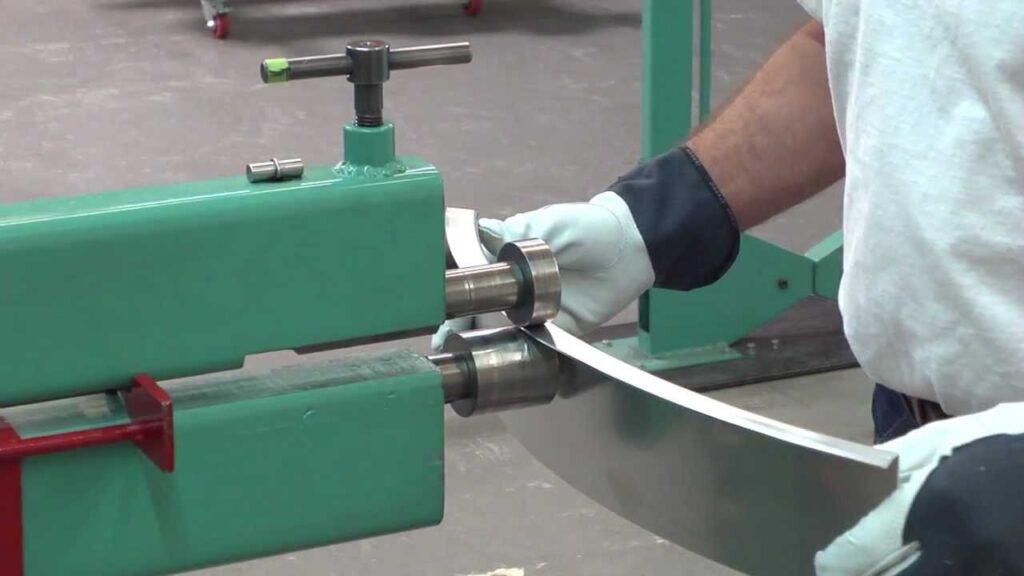
Hydroforming
Hydroforming forms metal using fluid pressure instead of solid punches. A metal sheet is placed in a die, and high-pressure fluid pushes it into shape. This allows for complex and lightweight parts with uniform thickness.
It’s widely used in bicycle frames, automotive parts, and kitchenware. The process reduces the number of joints or welds required.
Hydroforming allows more design freedom and a better surface finish. It works best with soft and ductile metals like aluminum, copper, and stainless steel.
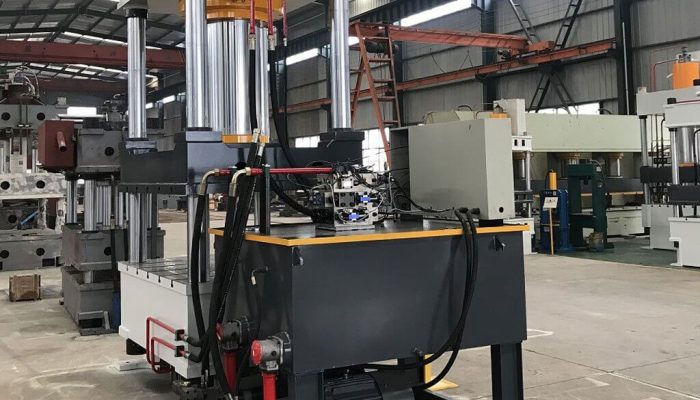
Spinning
Spinning forms round, symmetrical shapes by rotating a metal disc on a lathe. A roller pushes against the disc, shaping it over a mold or form. This creates cones, domes, and cylinders.
Spinning is used in lighting, cookware, and aerospace applications. It can be done manually for prototypes or with CNC for mass production.
The process works well for thin sheets and gives a smooth surface. Tool pressure and rotation speed must be controlled to avoid tearing or thinning.
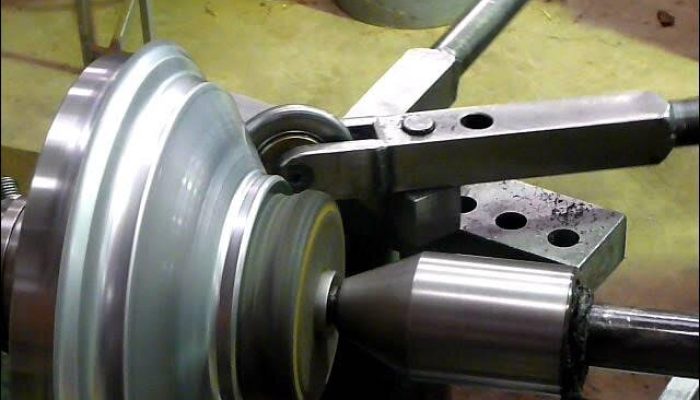
Extrusion
Extrusion pushes metal through a die to form long, uniform cross-sections. While it’s more common for bars and rods, some sheet-like shapes can also be extruded depending on the profile.
It’s used in applications like heat sinks, LED housings, and structural supports. Extrusion gives a clean surface finish and accurate shape.
This process works best with softer metals like aluminum. Proper cooling and die design help maintain consistent quality.
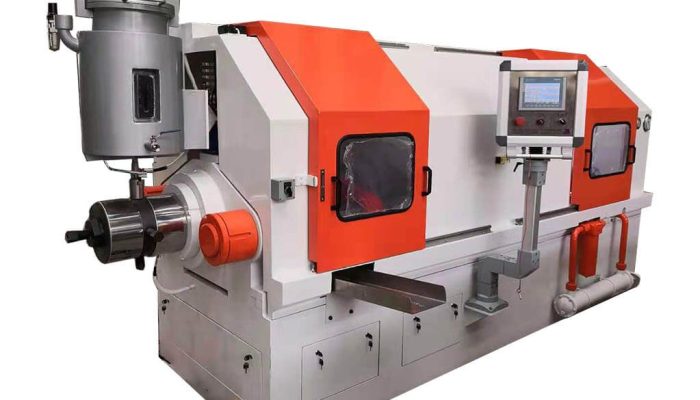
Curling
Curling rolls the edge of a sheet into a loop or coil. This smooths sharp edges and adds strength to the part. It’s often used in lids, door edges, and decorative trims.
The process helps improve safety and gives a finished look to the part. Rollers or custom dies are used to form the curled edge.
Curling requires accurate control to avoid splitting the metal. The material must be ductile enough to roll without cracking.
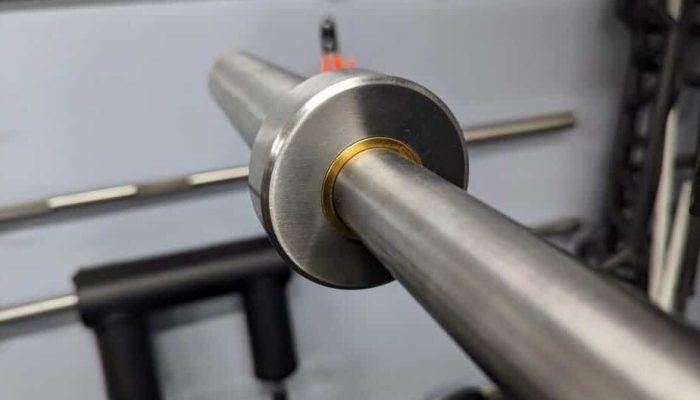
Tools and Equipment for Forming
Forming depends on having the right tools. Each piece of equipment plays a key role in shaping parts accurately and efficiently.
Press Brakes and Forming Presses
Press brakes bend metal sheets using a punch and die. They come in manual, hydraulic, and CNC types.
Hydraulic models offer better control. CNC press brakes give higher precision and faster setup. Forming presses are larger machines that stamp, punch, or draw metal. They use high force to shape parts in a single stroke or multiple steps.
Dies, Punches, and Tooling Materials
Dies and punches define the shape of the metal. The punch applies pressure. The die supports the sheet and controls the final form.
Tooling must be strong and wear-resistant. Common materials include tool steel, carbide, and hardened alloys.
Tool choice affects accuracy, repeatability, and cost. Well-designed tooling also reduces scrap and setup time.
CNC Machines and Automation Integration
CNC technology controls machines using digital instructions. In forming, CNC systems set angles, force, and position with precision. CNC press brakes can store programs for different jobs, speeding up changeovers.
Automation adds robots, feeders, and sensors. This reduces human error, increases speed, and supports 24/7 production.
Material Considerations
Choosing the right metal makes all the difference. Each material behaves differently during forming. Let’s look at the most common options and their properties.
Common Metals Used in Forming
Stainless Steel
Stainless steel resists corrosion and lasts long. It’s harder to form than regular steel but works well for medical equipment and kitchen appliances. Use it when you need strength and rust protection.
Carbon Steel
Carbon steel is strong and cheap. It bends and forms easily, making it perfect for car parts and construction. The more carbon it has, the stronger but less formable it becomes.
Galvanized Steel
This is carbon steel coated with zinc. The coating prevents rust while keeping the steel’s strength. Use it for outdoor products like roofing or electrical boxes.
Aluminum Alloys
Aluminum is light and easy to form. Different alloys offer various strengths. Aircraft parts and drink cans often use aluminum because it doesn’t rust and is lightweight.
Copper and Brass
These metals conduct electricity and heat well. They’re soft and form easily into pipes or electrical parts. Brass is stiffer than copper but still workable.
Titanium
Titanium is very strong but hard to form. It’s light and doesn’t corrode, so it’s used in aerospace and medical implants. Expect higher costs and special tooling needs.
Material Properties That Affect Forming
Ductility and Malleability
Ductility means how much a metal can stretch. Malleability is how well it flattens without cracking. Copper is very ductile, while titanium is less so. More ductile metals form complex shapes better.
Yield Strength and Work Hardening
Yield strength is when metal starts bending permanently. Some metals get harder as you work them (work hardening). Aluminum work hardens fast, while mild steel does it slowly.
Thickness and Gauge Standards
Thicker metal is stronger but harder to form. The gauge number gets smaller as the metal gets thicker. For example:
- 18 gauge = about 1.2mm thick
- 22 gauge = about 0.8mm thick
- 24 gauge = about 0.6mm thick
Thin sheets (24+ gauge) bend easily but dent. Thick sheets (under 18 gauge) need powerful machines. Always check your forming equipment’s limits before choosing thickness.
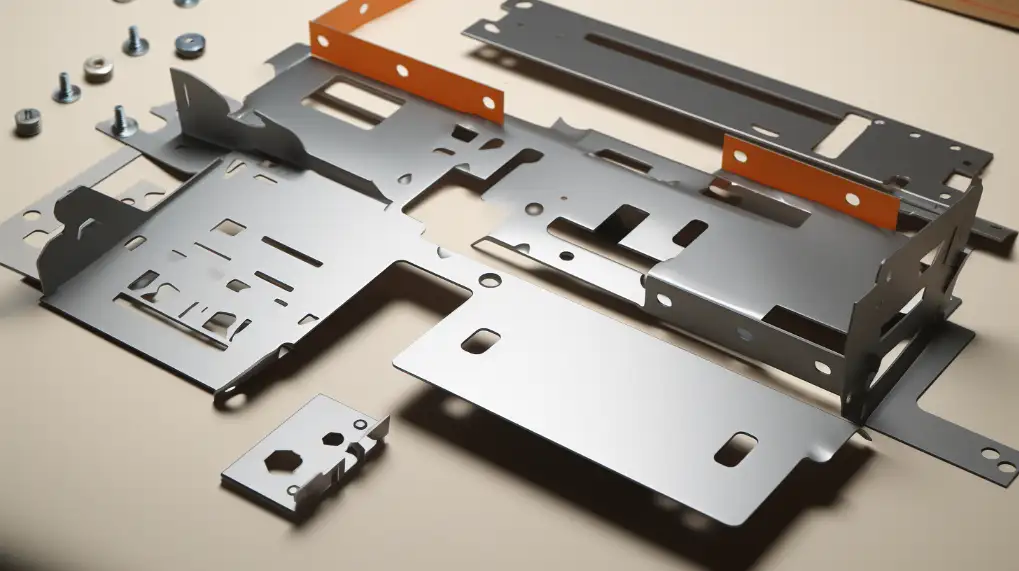
Important Parameters in Sheet Metal Forming
Forming metal accurately depends on several key values. These parameters help ensure the final part matches the design and functions well in its application.
K-Factor
Forming metal accurately depends on several key values. These parameters help ensure the final part matches the design and functions well in its application.
- Typical range: 0.3 to 0.5
- Softer metals = lower K-factor
- Harder metals = higher K-factor
- Use it to calculate flat pattern dimensions before bending. The wrong K-factor means your part will be too long or too short.
Bend Radius (R)
Bend radius is the distance from the center of the bend to the inside surface. A small radius gives a sharp bend, while a large radius creates a smooth curve.
- Minimum radius depends on the material and thickness
- Too small = cracks on the outside of the bend
- Rule of thumb: R should be at least equal to the sheet thickness
- For stainless steel, use 2- 3 times the thickness. Aluminum can handle tighter radii.
Bend Dedication and Bend Allowance
Bend deduction and bend allowance are used to calculate the flat length before bending. They account for how the metal stretches or compresses during bending.
- Bend allowance = length of neutral axis in the bend area
- Bend deduction = amount to subtract from the total length
- Calculate using:
- Bend Allowance = Angle × (π/180) × (Radius + K-factor × Thickness)
Springback
Springback happens when the metal slightly returns to its original shape after bending. The material’s elastic recovery causes it.
- Springback angle = difference between bent and final angles
- Harder materials spring back more
- Typical compensation: 2-5° overbend
- For precision work, test with scrap material first to determine the exact springback.
Design Considerations for Formed Parts
Good part design helps avoid production issues. It also lowers costs and improves part quality. These design rules are based on how metal behaves during forming.
Designing for Manufacturability
Parts should be easy to form with standard tools and processes. Complex shapes or tight bends may need special tooling or slow down production. Keeping designs simple helps save time and money.
Avoid features that are hard to bend or reach with tooling. Keep shapes consistent and allow for easy alignment and handling. Design with production in mind from the start.
Use standard material thicknesses and radii when possible. This reduces cost and helps with sourcing. Avoid deep draws or tight corners that could cause tearing or cracking.
Minimum Radii and Bend Allowance
Always use a bend radius that matches or exceeds the material thickness. Sharp bends may crack the part or cause extra stress. Thicker materials need larger radii.
Keep the minimum inside radius at least equal to the sheet thickness. This helps maintain material strength and avoids defects.
Use correct bend allowance values when creating flat patterns. This ensures that the finished size is accurate after forming. Consider the material type and K-Factor when calculating allowances.
Hole Placement and Distortion Control
Avoid placing holes or cutouts too close to bends. Bending near a hole can stretch or deform the area. As a rule, keep holes at least 1.5 times the material thickness away from any bend line.
Holes may change shape after bending. Plan the whole position to account for this. If needed, punch the holes after bending for better accuracy.
Keep features like notches, slots, or corners smooth. Sharp edges can cause stress points and lead to cracking. Rounded edges and gradual curves help distribute force more evenly.
Applications of Formed Sheet Metal
Formed sheet metal is used across many industries. It creates strong, lightweight parts that are easy to produce in large numbers.
Enclosures, Brackets, and Panels
Forming is ideal for making electrical boxes, mounting brackets, and control panels. These parts need precise bends, clean edges, and good strength. They are common in consumer electronics, telecom systems, and industrial equipment.
Automotive Body Parts
Cars use many formed metal parts—doors, fenders, hoods, and floor panels. Stamping and deep drawing create smooth, curved shapes that meet safety and style needs. Forming also allows for the fast production of large volumes with consistent quality.
Aerospace Skins and Electronic Casings
Aerospace uses formed aluminum and titanium for skin panels, ducts, and brackets. The process keeps parts light but strong. It also allows for complex shapes without seams. Electronic products rely on small, formed metal cases for protection and heat control.
Conclusion
Sheet metal forming shapes flat metal into useful parts using force and precise tools. Common methods include bending, stamping, deep drawing, and roll forming. The choice depends on the part shape, volume, and material.
Need help with custom sheet metal forming? Talk to our experts to get a quote or technical support for your next sheet metal forming project.
Hey, I'm Kevin Lee

For the past 10 years, I’ve been immersed in various forms of sheet metal fabrication, sharing cool insights here from my experiences across diverse workshops.
Get in touch

Kevin Lee
I have over ten years of professional experience in sheet metal fabrication, specializing in laser cutting, bending, welding, and surface treatment techniques. As the Technical Director at Shengen, I am committed to solving complex manufacturing challenges and driving innovation and quality in each project.

